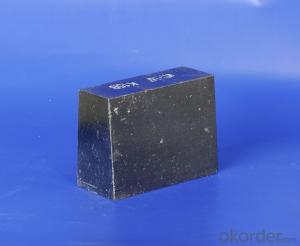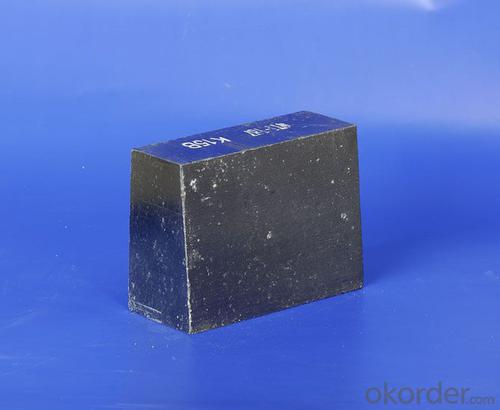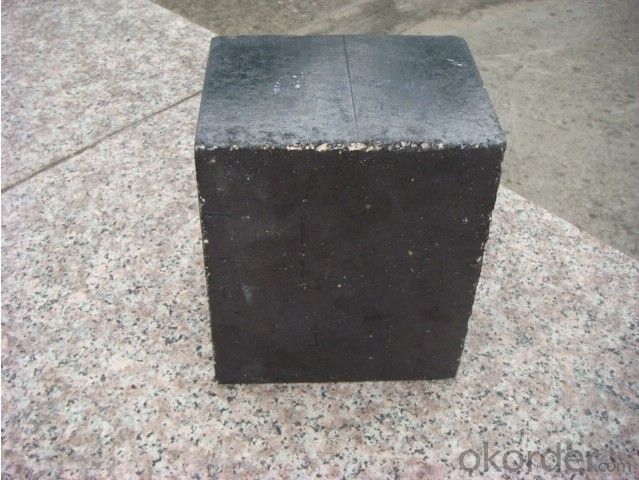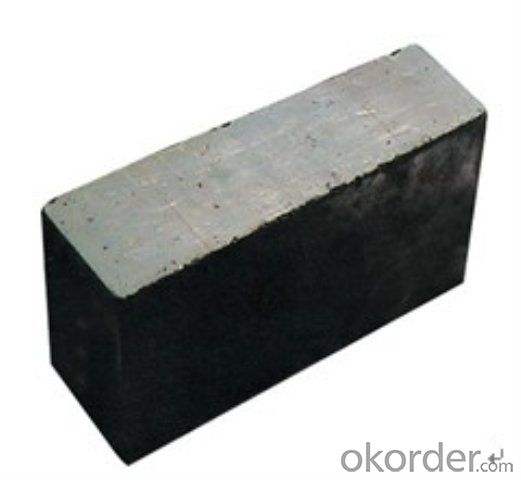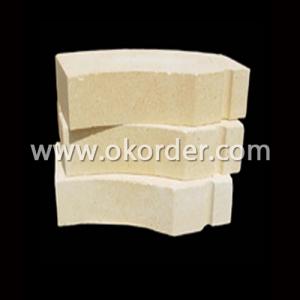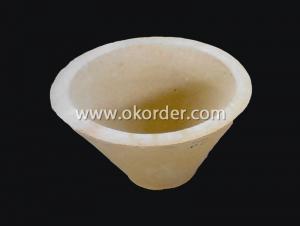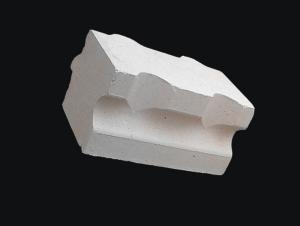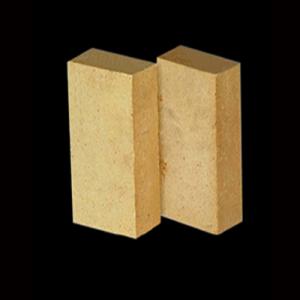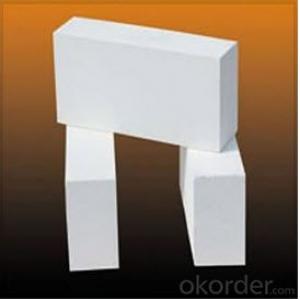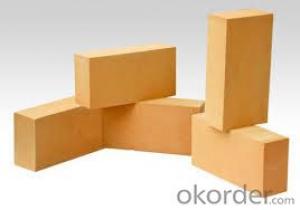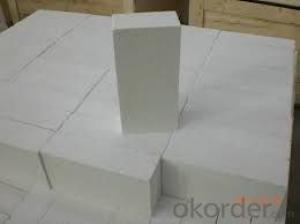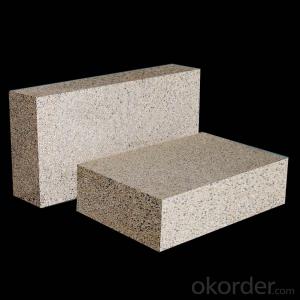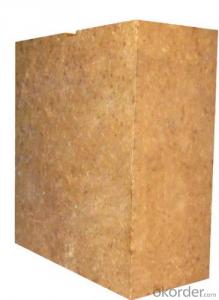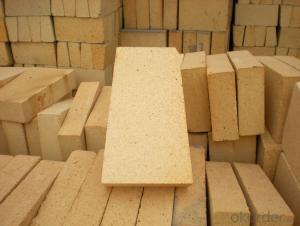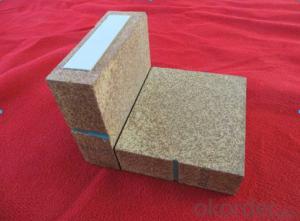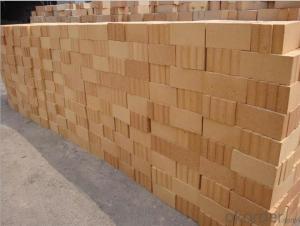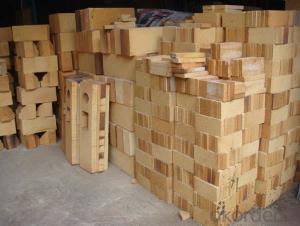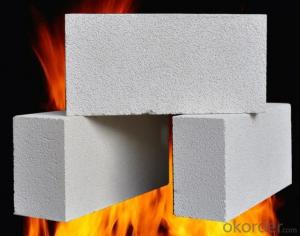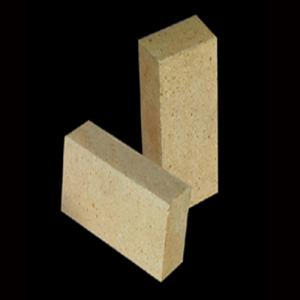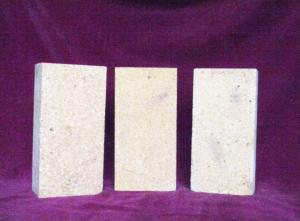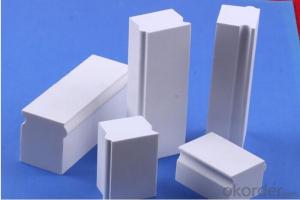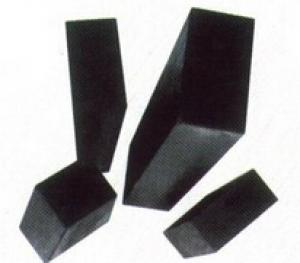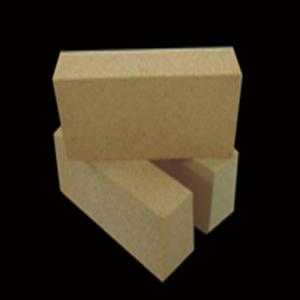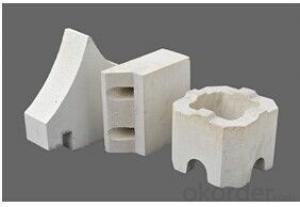High Alumina Brick - Aluminum Silica Carbide Brick CNBM Made in China
- Loading Port:
- Shanghai
- Payment Terms:
- TT OR LC
- Min Order Qty:
- 50000 m.t.
- Supply Capability:
- 50000 m.t./month
OKorder Service Pledge
OKorder Financial Service
You Might Also Like
Packaging & Delivery
| Packaging Detail: | The aluminum silicon carbide carbon refractory brick for Ladle applicationis packed on wooden pallets with three layers water-proof shrink film and tightened with plastic/steel bandages,when in the transportation process of magnesia carbon brick,we should pay attention to moisture and light handling. |
| Delivery Detail: | 7-15 working days |
Specifications
1.High strength
2.Spalling resistance
3.High thermal shock resistance
4.Good resistance to manchanical erosion
Aluminum Silicon Carbide Carbon Refractory Brick for Ladle Application
Aluminum silicon carbide carbon refractory brick are universal materials for the lining of molten pretreatmentequipments of molten iron tank, torpedo car, etc. The products are shaped by machine power by using dense bauxite clinker and brown fused alumina as base materials and adding high quality SiC fines and high purity flake graphite. It has the advantages of excellent slag resistance, thermal shock resistance, good resistance to mechanical erosion, abrasion resistance, etc.
Main Chemical Compositions and Physical Properties
| Items | Specific value | |||
| ASC-Z | ASC-T | ASC-D | ||
| Chemical Component(%)≥ | Al2O3 | 55 | 57 | 62 |
| SiC plus F.C | 17 | 14 | 10 | |
| F.C | 8 | 6 | 4 | |
| ApparentPorosity(%) ≤ | 8 | 10 | 10 | |
| Bulk Density(g/cm³) ≥ | 2.75 | 2.75 | 2.75 | |
| Comprehensive strength(Mpa)≥ | 35 | 40 | 45 | |
| High Temperature Flexural Strength(Mpa)(1400℃*0.5h)≥ | 5 | 5.5 | 6 | |
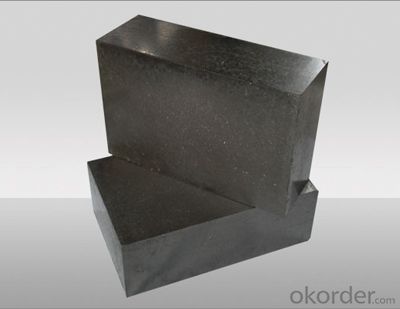
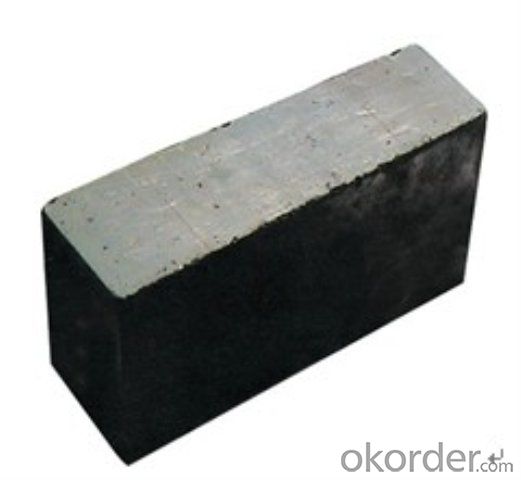
- Q: How much is the bending temperature aluminum silicon carbide brick for torpedo car
- The product has the advantages of high temperature, little creep, strong corrosion resistance and good thermal shock resistance, and is suitable for large and medium-sized hot blast stoves.
- Q: What is the heat preservation material used in a laboratory furnace?
- Asbestos, high alumina brick, or carbonized silicon are often used.Thermal insulation materials are generally used to guide heat coefficient less than or equal to 0.2 of the material. Thermal insulation material development is very fast, and in industry and building the use of good insulation technology and materials, often can get twice the result with half the effort. Each ton of mineral cotton insulation used in the building saves one ton of oil a year.
- Q: How much is one ton of high alumina refractory brick?
- High alumina refractory brick according to the different content of AL2O3 is divided into grade, grade one and grade two, and grade three high aluminum brick, Zhengzhou Kang Hui refractories factory price in 800-1900 yuan / ton, stable quality, are exported to the domestic and foreign markets.
- Q: What are the specific raw materials for plastic pallets?
- With excellent mechanical properties, its strength and elasticity are higher than HDPE, and it has good flexural fatigue resistance. It has good heat resistance and good chemical stability. Besides being concentrated by concentrated sulfuric acid and concentrated nitric acid, it is relatively stable to other chemical reagents. The high frequency insulation performance of polypropylene is excellent because of its almost no water absorption, so the insulation performance is not affected by temperature.
- Q: The difference between aluminium refractory and magnesia refractory
- Aluminum refractory belongs to neutral refractory material, usually refers to silicon aluminum refractory materials, such as: high alumina brick, clay brick, high alumina castable and other products, the production of raw materials is mainly bauxite.
- Q: The cloth blowing is not uniform on the lime kiln refractory brick is damaged it
- Lining 1 yuan to prevent direct damage to the Sindh kiln high temperature flame or air, to protect the kiln carcass; 2, to prevent harmful substances (CO, SO2) erosion of the kiln body; 3, to prevent corrosion, material flow on the kiln body; 4, reduce the kiln temperature, kiln body to prevent oxidation 5, has the function of corrosion; thermal insulation; 6, to improve the coating performance.
- Q: What are the requirements for refractory materials in heat treatment furnace?
- Refractoriness is the property of a refractory against high temperature, which means the temperature at which a refractory is softened to some extent after heating, but not its melting point. According to the degree of refractory, refractory materials can be divided into: General refractories, refractory degree is 1580 to 1770 DEG C; advanced refractories, refractory degree is 1770 to 2000 DEG C; special refractory material, refractory degree is greater than 2000 DEG C.
- Q: Refractory brick, high alumina brick, magnesia chrome brick, magnesia brick, clay brick, which type of high temperature refractory brick?
- High alumina brick clay brick up to 1700 degrees above 1500 degrees -1750 degrees of magnesia brick and magnesia chrome brick 1500-1650 degrees, I is the production of clay brick, brick my temperature at 1500-1700 degrees. Specific depends on what kiln, brick is only part of it
- Q: How high can aluminum bricks expand at 80O degrees of heat?
- The expansion of high alumina brick is not only related to temperature, but also related to its material composition. The refractory temperature of high alumina brick is above 1770 centigrade. The temperature of 800 DEG C has little influence on the expansion of high alumina brick.
- Q: What should be used as binder for making high alumina bricks?
- Bond for making high alumina brick: soft clay has good plasticity, so the high alumina brick is usually made of soft clay as bond. However, the free Al2O3 free SiO2 and bauxite clinker clay in under 1200 degrees occurred two times of Mullization reaction, generate large volume expansion, silicon porosity, strength reduction. Therefore, the amount of clay powder in the ingredient should be no more than 5%.
Send your message to us
High Alumina Brick - Aluminum Silica Carbide Brick CNBM Made in China
- Loading Port:
- Shanghai
- Payment Terms:
- TT OR LC
- Min Order Qty:
- 50000 m.t.
- Supply Capability:
- 50000 m.t./month
OKorder Service Pledge
OKorder Financial Service
Similar products
Hot products
Hot Searches
Related keywords
